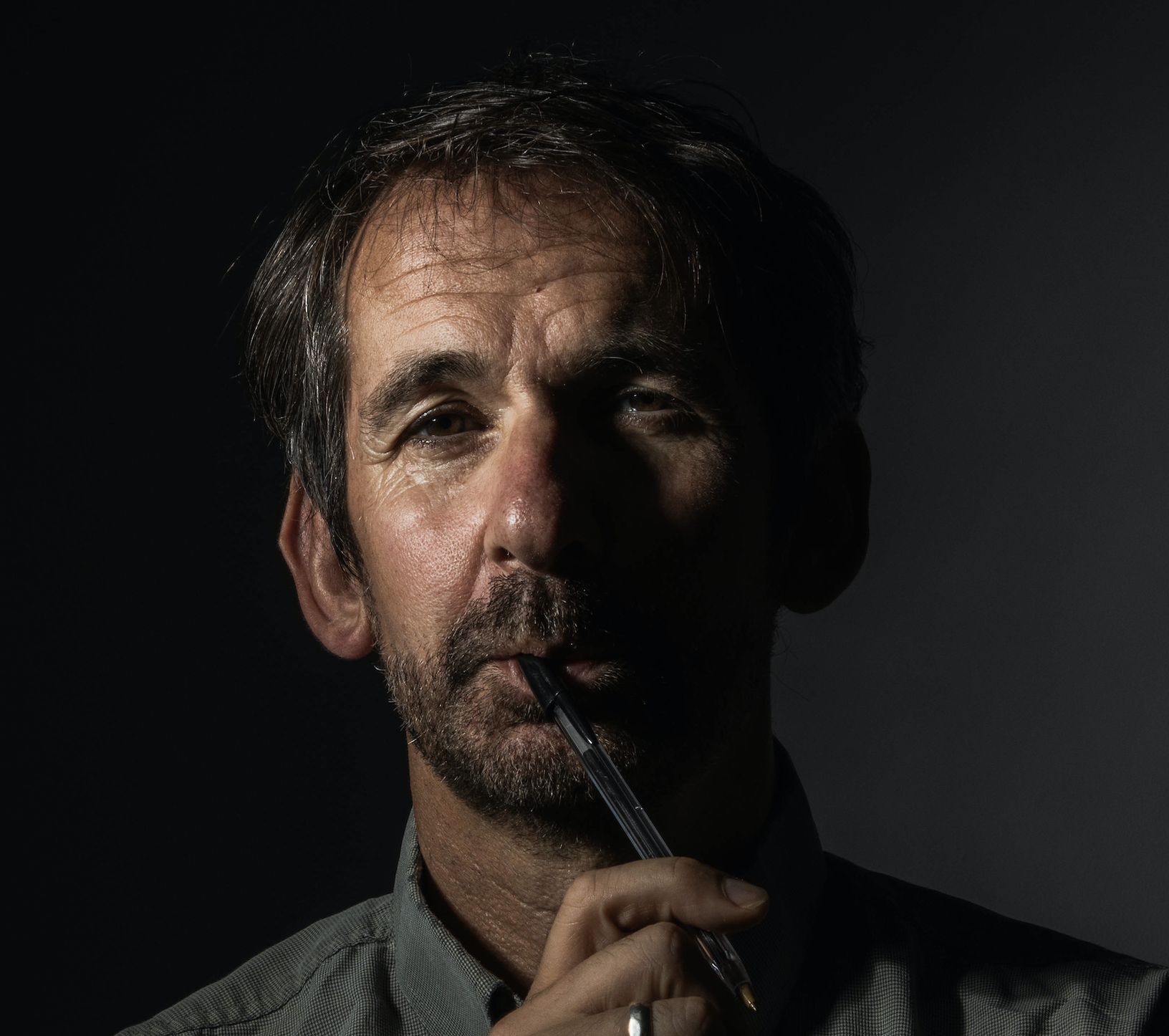The West Highland Way is one of the world’s most popular long-distance hikes. With its ever-changing scenery, it is constantly rewarding the efforts of those who walk it with something fresh and interesting around every corner.
Opened in 1980, the West Highland Way was the very first official long-distance walk in Scotland and is now one of the nation’s designated Great Trails.
At 96 miles (154 km) and around 4,000m of ascents (three climbs of Ben Nevis), it gives a taste of several distinct landscapes in the Scottish Highlands without being too daunting.
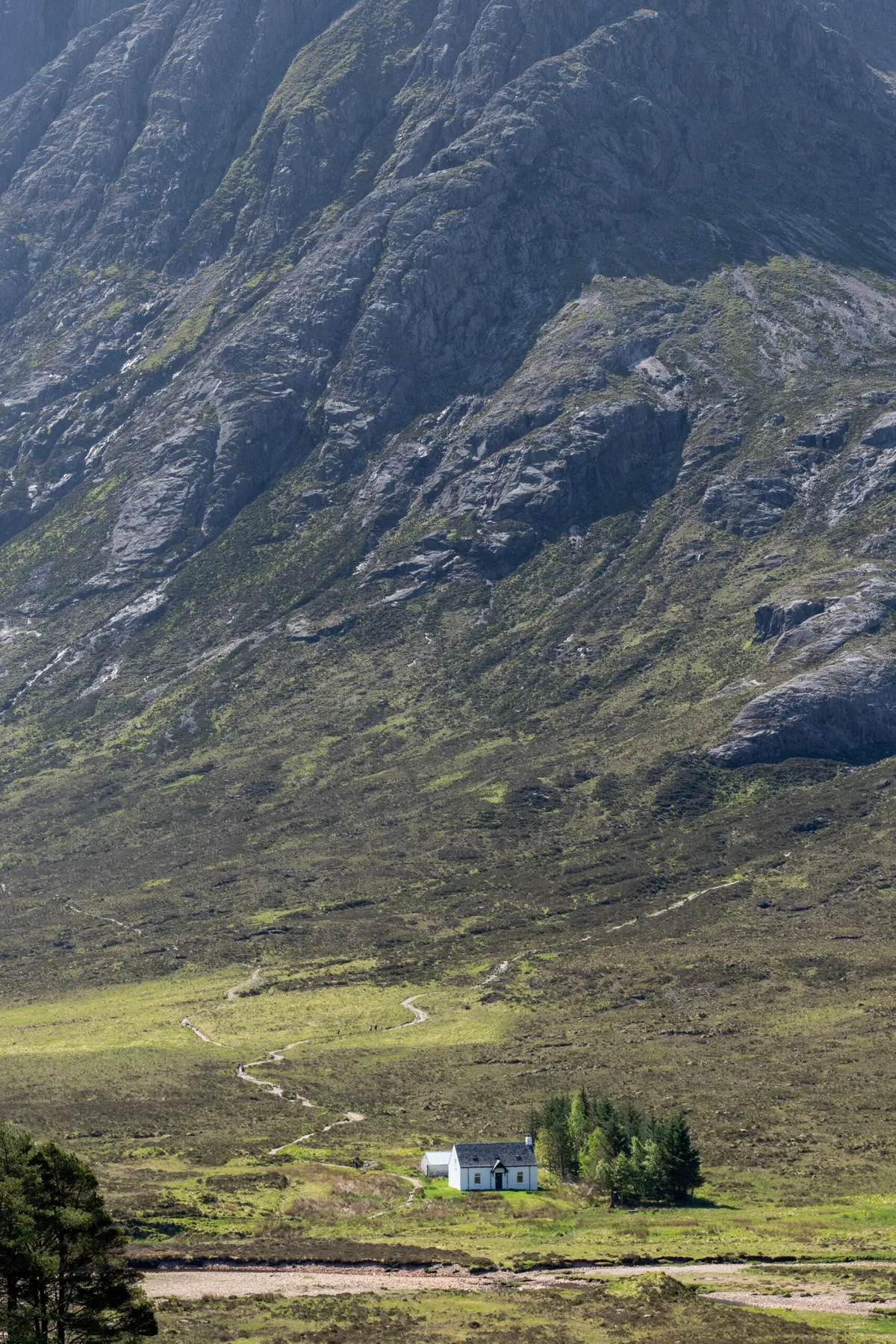
West Highland Way route
Usually walked in five to eight days from south to north, the well waymarked route begins in Milngavie (pronounced mul-guy), on the outskirts of Glasgow, and ends in the town of Fort William on Loch Linnhe.
On the way it flanks the eastern shore of Loch Lomond, heads along impressive valleys such as Glen Falloch and Strath Fillan, rises up onto wild Rannoch Moor, passes the entrance to Glen Coe and tiptoes around the towering hulk of Ben Nevis.
West Highland Way distance
The West Highland Way is 96 miles or 154 km long. From its approval in 1974, the trail took six years to complete.
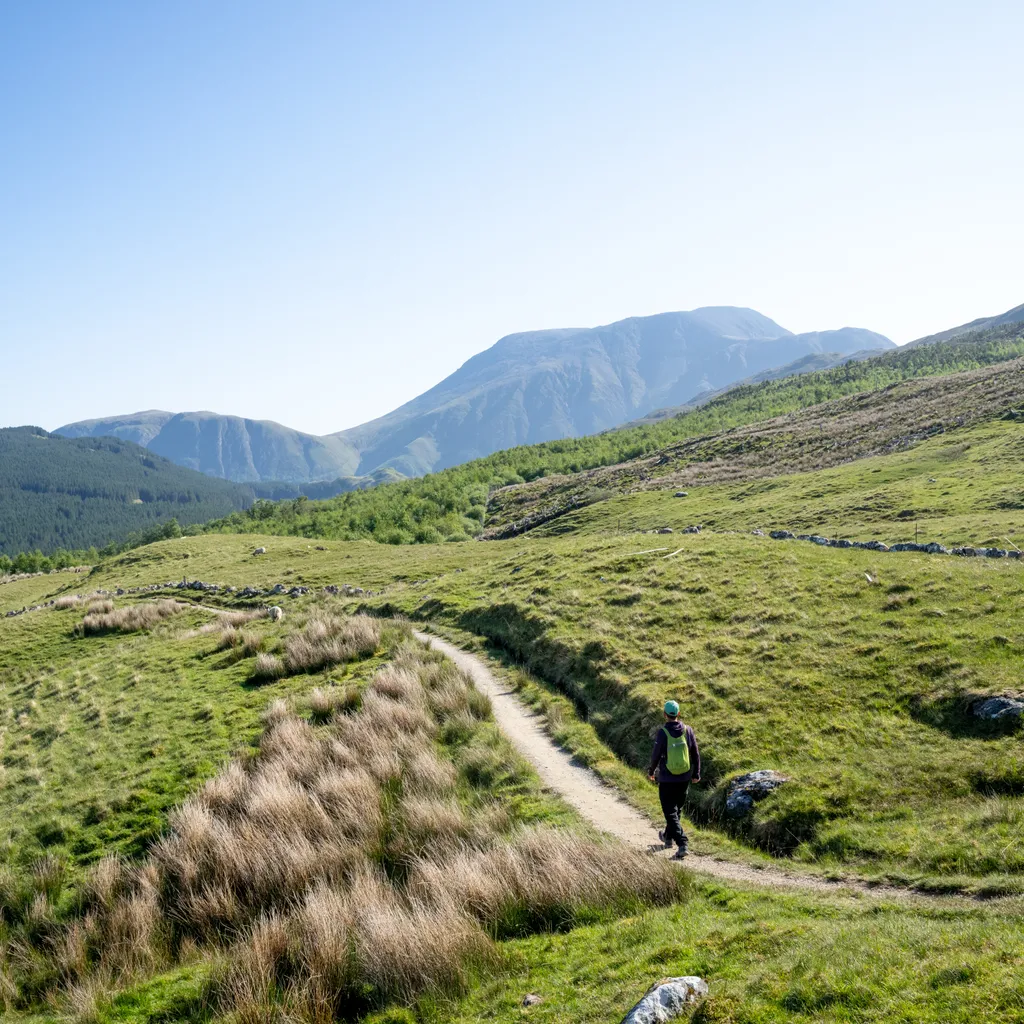
West Highland Way stages
Day 1 – Milngavie to Balmaha (19 miles/31 km)
Milngavie, with its railway station and plentiful shops, makes an ideal jumping-off spot for a long-distance walk. Pass beneath the archway that marks the official start of the West Highland Way and wander into a wood to leave all traces of urban life behind you.
The path emerges upon a gentle scene of golden gorse bushes wafting coconut scents into the breeze, soft waves of green lapping out to low distant hills, with white dabs as from an artist’s brush, indicating hawthorn trees. Swallows and goldfinches flit around.
Twelve miles in, the village of Drymen is many walkers' first night stop. Those with energy can press on to Balmaha, merely pausing for a quick pick-me-up at the Drymen Inn. Right at the end of this longer day is the first proper climb – Conic Hill – whose heights offer some eye-easing views of a low sun casting its light over the islands of Loch Lomond.
Where to stay in Balmaha?
Balmaha, at the southern end of Loch Lomond, is more resort than village, with the Oak Tree as its bar-cum-hotel. Feeling like some luxury on night one? Stay in one of their ‘superior pods’ – a sort of outdoors hotel room near the shore.
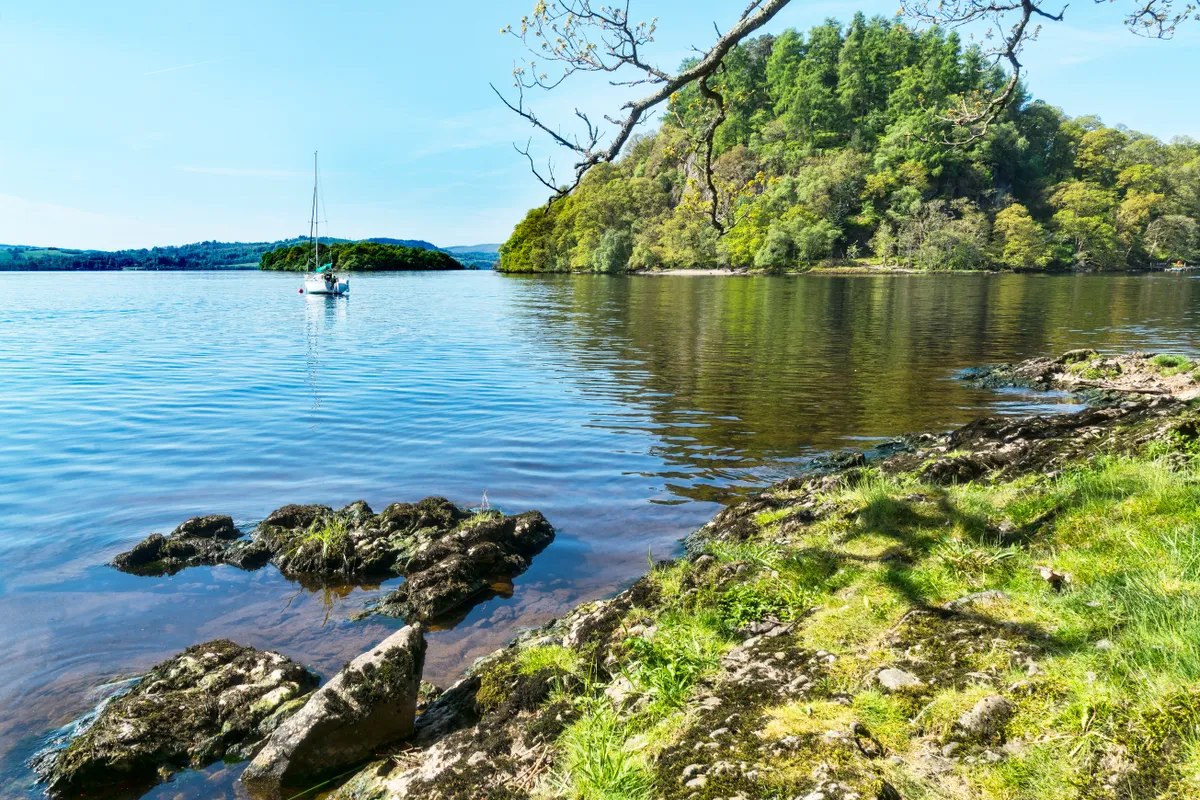
Day 2 – Balmaha to Inversnaid (15 miles/24 km)
At a glance, it's easy to mark the second day as an ‘easy day’: an amble along Loch Lomond’s shore.
The day’s walk comes as something of a shock to most people. Initially straightforward, it develops into mile after mile of testing path that wiggles and squirmes and fights its way through the woods. If you’re into bouldering, you’ll love it. If not, an alternative less challenging route does at least cut out a section of the character-building rough stuff.
Optional island trip: there is the option for a little side trip on day two: a short ferry ride (balmahaboatyard.co.uk) from Balmaha to the island of Inchcailloch. Visit in spring and breath in the wild garlic; admire the bluebells, fine oak trees and the ancient Clan MacGregor burial ground; and then lay down on the jetty. With the sunshine sparkling on the loch you could be on some Greek island.
Where to stay in Inversnaid?
Campsite at Inversnaid Bunkhouse: a converted 19th-century church, the 7-room bunkhouse has its own bistro complete with stained-glass windows. You can pitch up on their small lawn, which has room for a dozen or so tents.
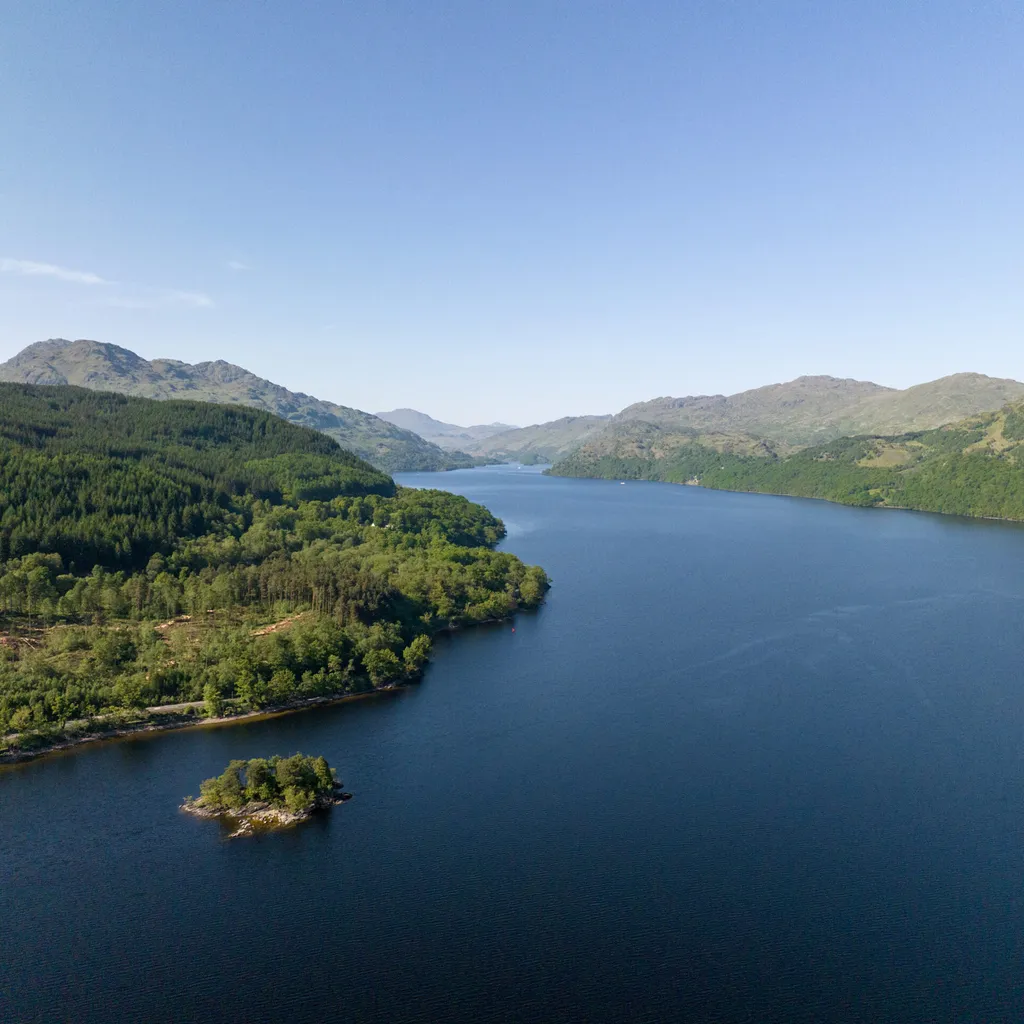
Best walks in Loch Lomond and the Trossachs National Park
Guide to Scotland's Great Trails
Discover some of the most beautiful lakes in Britain
Day 3 – Inversnaid to Crianlarich (13 miles/21 km)
Day three sees you bid farewell to Loch Lomond after a final stretch of taxing path, passing Rob Roy’s Cave, which may have been used by both the rapscallion himself and, much earlier, by Robert the Bruce.
After a climb away from the head of the loch, the trail joins an old military road, built in the 1700s to aid in the suppression of Jacobite rebels. But the scene in front of you could hardly be less war-like: a tranquil glen where herds of wild goats, all chocolate-brown-and-cream, can be seen grazing contentedly in the sunshine.
The way now follows the River Falloch, via the Beinglas campsite where you can seek refreshment at the Stagger Inn bar. Passing the attractive Falls of Falloch, the path heads through forestry land before dropping down into Crianlarich below Ben More. The village marks the Way’s half-way point and is home to a youth hostel with extremely comfortable beds.
Where to stay in Crianlarich?
The Crianlarich Youth Hostel is a friendly place with a mixture of dorms and private rooms, a well-equipped kitchen, dining room and (often a godsend) a drying room.
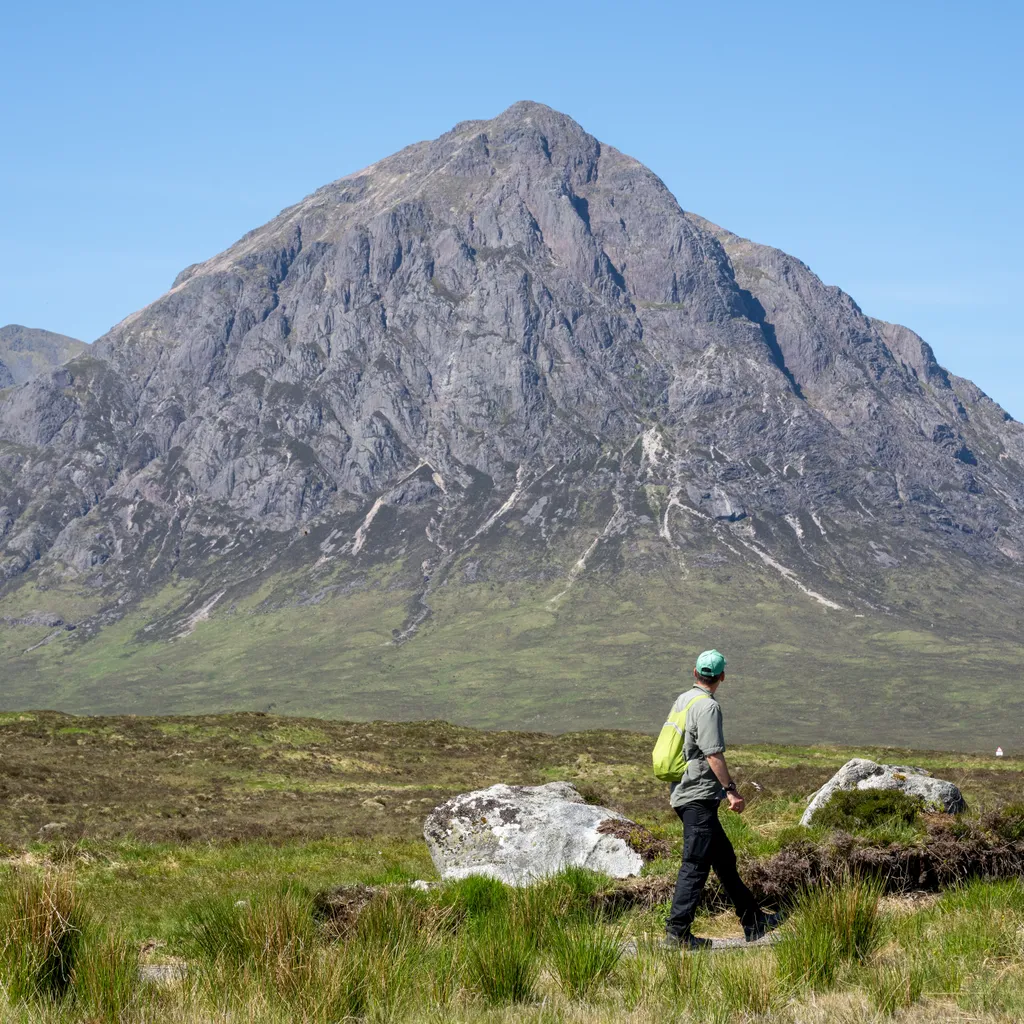
Day 4 – Crianlarich to Bridge of Orchy (13 miles/21 km)
Strath Fillan provides the next pathway through the mountains. Pause by the ruins of the 12th-century St Fillan’s Priory, where the monks once enjoyed life in a broad river valley set within a crown of emerald mountains.
Further on, the once tiny Tyndrum, unlikely possessor of two railway stations on two separate lines, has sadly become a rather soulless place where coach parties sleep, eat and buy over-priced souvenirs. But at least it also has Brodies, a friendly little convenience store where all the savvy hikers go.
And you're soon free again, following the railway line through a slender valley that opens up to offer sumptuous views of pyramid-like Beinn Dorain.
And before long the brilliant white façade of the Bridge of Orchy Hotel comes into view, named after another bit of Highland infrastructure created to subdue those pesky Jacobites.
Where to stay in Bridge of Orchy
Bridge of Orchy Hotel is arguably the swishest place on the whole Way. For a spot comfort, pick one of the venerable hotel’s annexe rooms with a patio and view towards the eponymous bridge over the River Orchy. For a cheaper option, try the neighbouring Greenstone Lodge B&B.
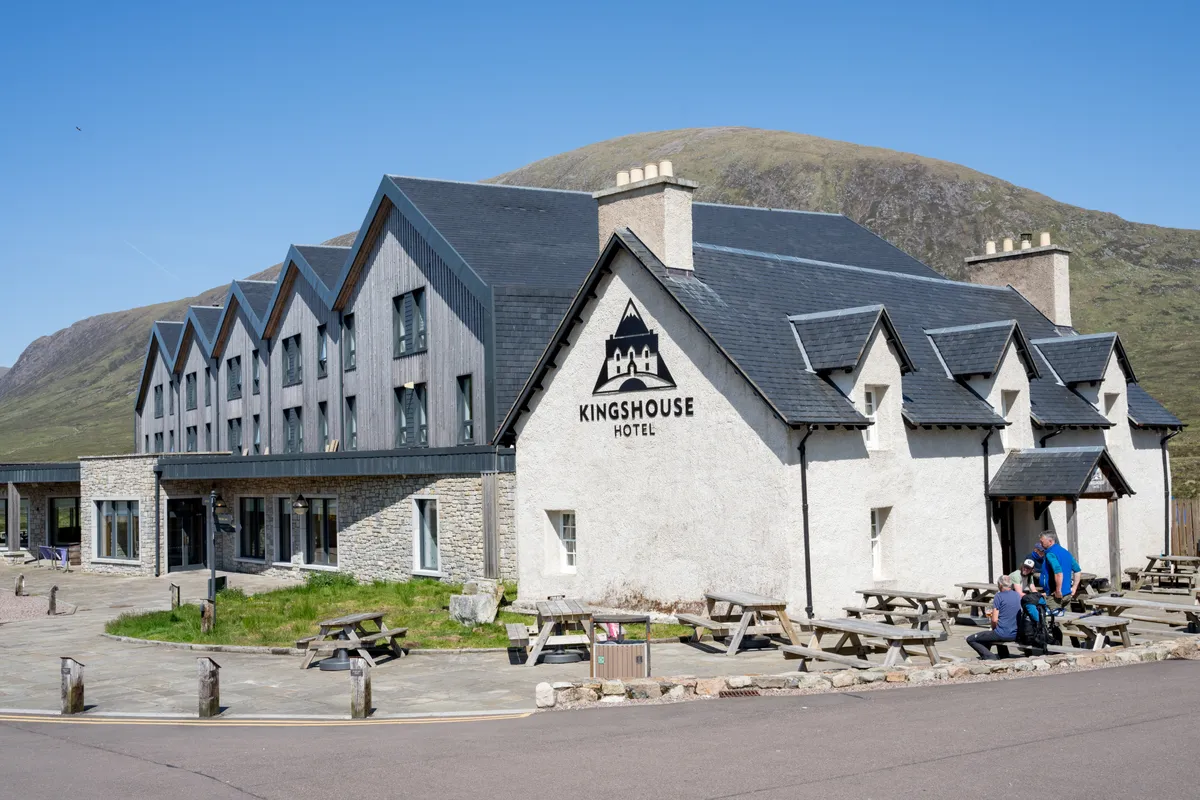
Day 5 – Bridge of Orchy to Kinlochleven (21miles/34 km)
The first order of day five is to pick up the old Glencoe drovers’ road by Loch Tulla, soon emerging from behind a small plantation of firs onto Rannoch Moor. Listen for chirruping skylarks. There’s a wonderful loneliness about the moor and it's some time before the busy A82 comes into view.
A short stretch parallel to the road brings you to the Devil’s Staircase – despite its name (and reputation), it’s not a diabolical climb and before you know it you begin the long slow descent to Kinlochleven. Almost encircled by high proprietorial mountains, some parts of the village lie in shadow for a third of the year. Perhaps it’s just as well that, thanks to an Edwardian hydroelectricity scheme, Kinlochleven became the world’s first village with electricity in every home, when London was still lit by gas.
Where to stay in Kinlochleven?
Try Edencoille Bed & Breakfast, a family-run establishment with a very particular style and some lovely touches in the room, such as a mighty array of teas and a foot spa.
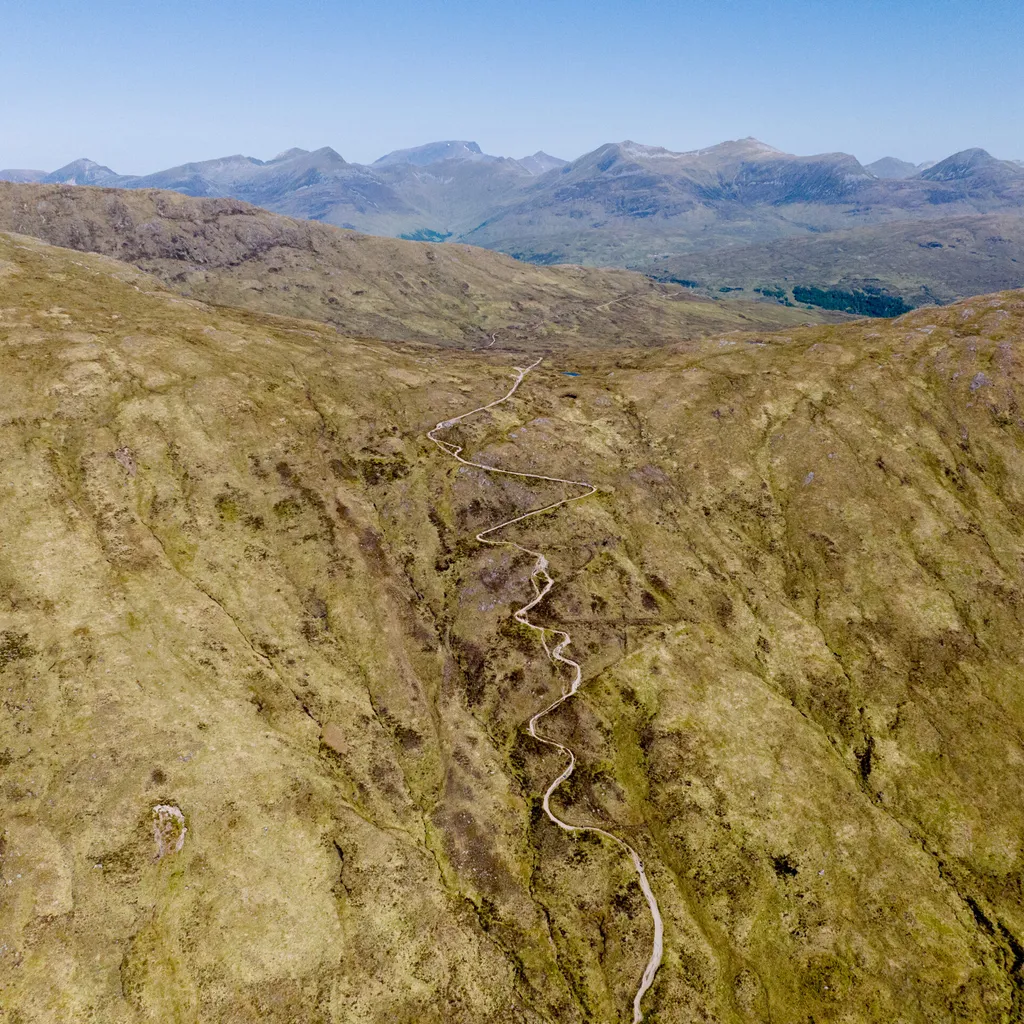
Day 6 – Kinlochleven to Fort William (15 miles/24 km)
And so comes the final push. Once you've climb out of Kinlochleven the route breezes along another old military road through the glen of Lairige Mòire, passing occasional roofless farmhouses whose former occupants doubtless scraped a difficult living among the mountains. The only sounds come from horned black-faced sheep, a trickling burn and cuckoos.
Ben Nevis, Britain’s tallest mountain, hove into view: a challenge for another day, for Fort William beckons. The official end of the West Highland Way was extended in 2010 to the far end of the High Street. There sits David Annand’s statue ‘Man with Sore Feet’ next to whom – looking appropriately footsore – it’s now customary to take a commemorative photo.
Where to stay in Fort William?
The closest campsite to Fort William (it’s a couple of miles from the end), Glen Nevis is large but split into smaller fields, and has a restaurant/bar too.
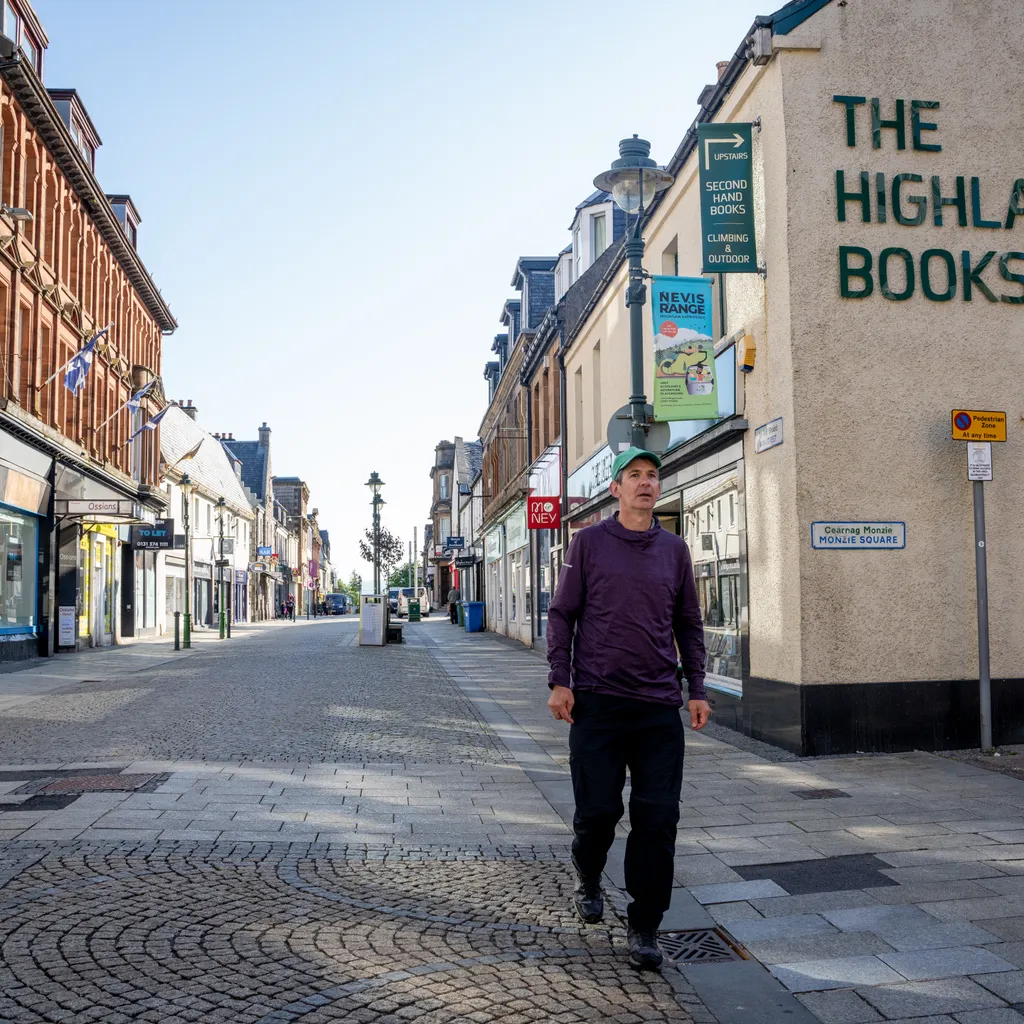
Baggage transfer
Want to give your back a break? Or perhaps you’re running the trail? Several companies offer a luggage transfer service, delivering your bag by van each day to your next port of call (though none cater for wild campers yet).
You can used Travel-lite, who are very efficient, but there’s also Baggage Freedom, Ecosse Travel and several others.
Expect to pay around £65 per bag (max. 20kg) for the full trail, £45 for up to four transfers, and £15 for single transfers. Rates are higher if travelling north to south.
Visit the West Highland Way website for more information.
Getting to the start of the trail
Served by railway stations at both ends (and en route at Crianlarich, Tyndrum and Bridge of Orchy), it’s unsurprising that the most popular way of accessing the West Highland Way is by train (scotrail.co.uk).
You can take the Caledonian Sleeper Train to Glasgow Central, walk ten minutes to Glasgow Queen Street, and jump on another train for the short hop to Milngavie.
From Fort William, there are four trains a day to Glasgow, plus the sleeper to London.
The X10 bus (mcgillsscotlandeast.co.uk) runs from Glasgow and Stirling to Milngavie; while various buses link Fort William with Glasgow, Oban and Inverness.
Food and drink
The Bistro at Inversnaid Bunkhouse is open to all and has a friendly, lively vibe.
The Stagger Inn (see what they did there?) at the Beinglas Campsite is a West Highland Way institution with its beer garden and filling pub grub.
The Wildcat at Fort William is a vegan café with a reputation for great coffee and extremely tasty wraps.
Hungry between stops? There’s a host of tiny (albeit slightly pricey) ’honesty shops’ along the way. At a repurposed telephone box, for example, I invested in an energy-boosting homemade flapjack.
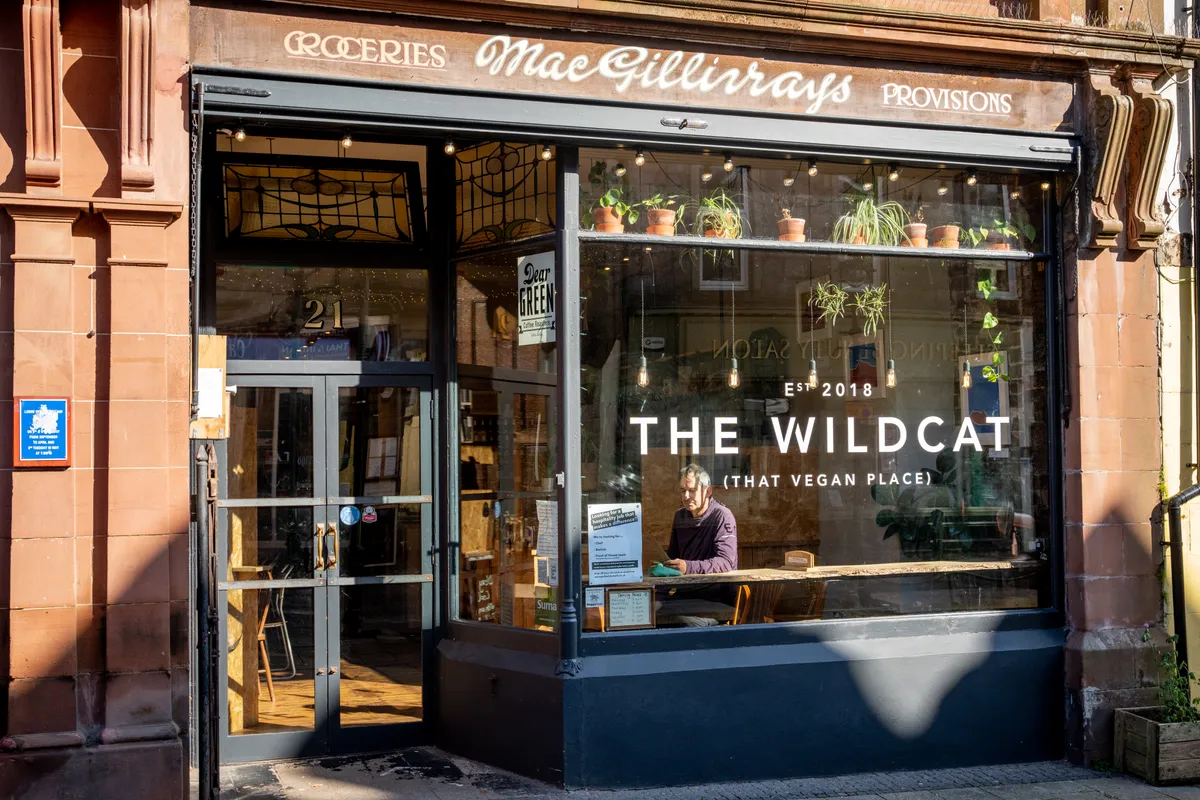
Best guidebook
While a guidebook isn’t strictly necessary, Walking the West Highland Way (Cicerone) is a cracker. It contains all the directions both ways, itinerary suggestions for 6-9 days, accommodation, shops, eateries, and some history too. Best of all, it comes with a separate booklet with end-to-end Ordnance Survey 1:25,000 mapping.
Camping on the West Highland Way
It’s certainly possible to wild camp from end to end – just remember to have respect for nature and fellow walkers and leave absolutely no trace. One favoured spot is just next to the bridge at Bridge of Orchy where there are even free portaloos for campers.
Things get more complicated when you pass through the Loch Lomond and The Trossachs National Park – do take note of the park’s wild camping restrictions between March and September; and there’s no camping allowed on forestry land.
Popular campsites include Drymen Camping, Sallochy and Caolasnacon in Kinlochleven.
